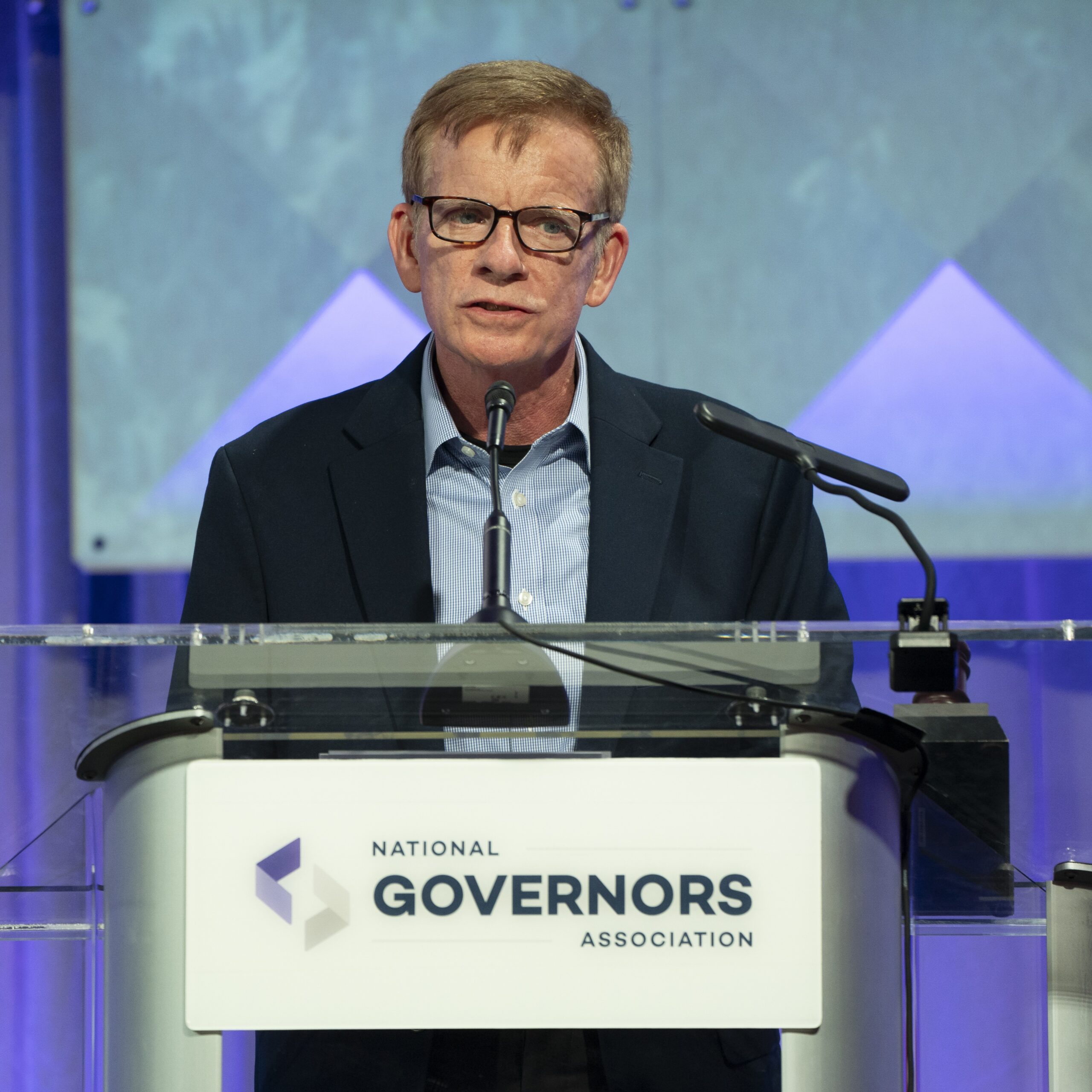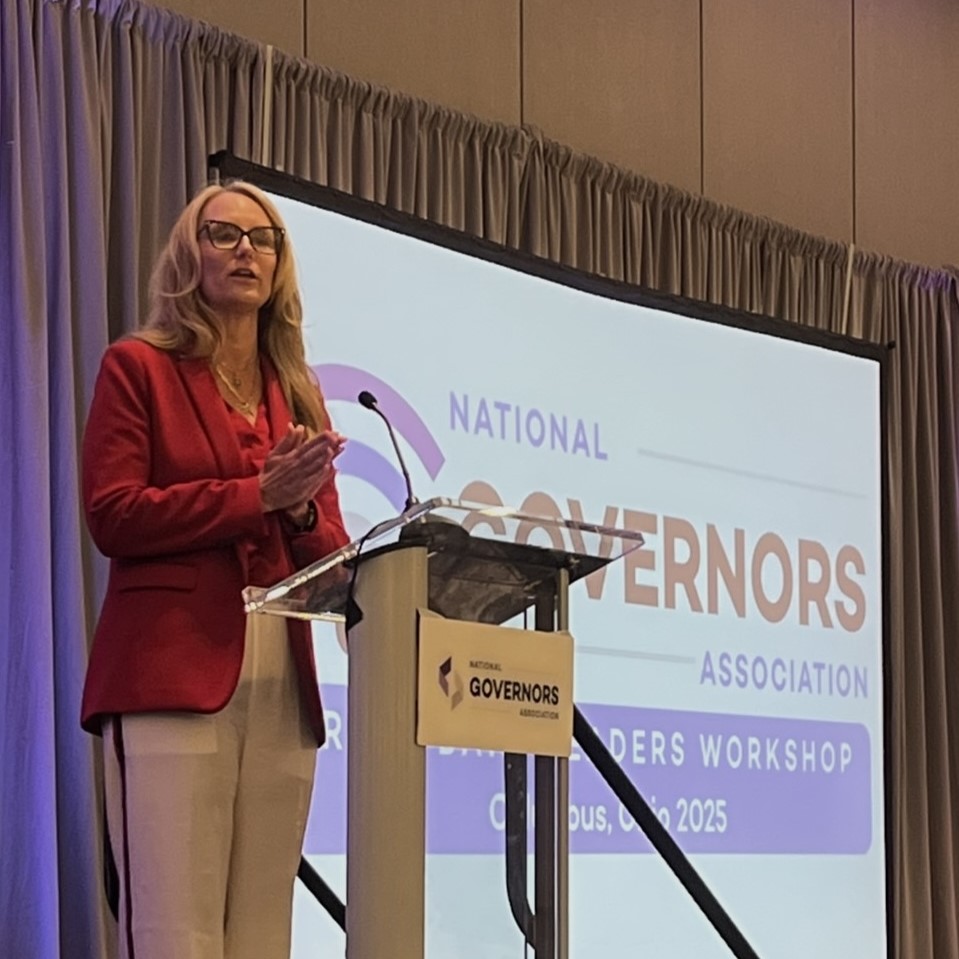In this webinar, Dr. Bonnie Fusarelli, Distinguished Professor, University Faculty Scholar & Executive Director of NC State’s Leadership Preparation Programs, shares an overview of the impact of principals and school leaders on student, teacher, and school success; the implications for state policy and practice; and her efforts through the NC State Educational Leadership Academy to improve principal preparation across North Carolina.
Presenters
- Dr. Bonnie Fusarelli, Distinguished Professor, University Faculty Scholar & Executive Director of NC State’s Leadership Preparation Programs
- Moderator: Seth Gerson, Program Director, K-12 Education, National Governors Association
Resources
- Slidedeck
- NC State Principal Preparation
- Wallace Foundation, How Principals Affect Students and Schools: A Systematic Synthesis of Two Decades of Research
Summary
Dr. Bonnie Fusarelli joined NGA’s Seth Gerson for a webinar discussion of NC State University’s Educational Leadership Academy (NELA), sharing an overview of her work to improve principal preparation across North Carolina and exploring the implications for state policy and practice.
As distinguished professor, university faculty scholar and executive director of NC State’s Leadership Preparation Programs, Dr. Fusarelli shared eye-opening statistics from the 2021 report How Principals Affect Students and Schools, including:
- High-performing teachers generate 5 to 6 more months of student learning each year than a poor performer
- 96% of teachers say the No. 1 factor in whether they stay at their current school is their principal
- When a top teacher leaves, only 1 in 6 potential replacements will be of similar quality; that falls to 1 in 11 in low-performing schools.
The NELA program at NC State University seeks to increase student achievement by preparing and retaining principals in high-poverty, hard-to-staff, and historically low-performing schools. Dr. Fusarelli explained how NELA creates a comprehensive leadership development and succession plan for NC high-need school districts. Each component is anchored in research-based best practices in leadership preparation and is designed to meet the specific contextualized needs of schools in North Carolina.
“I want people to be ready on day one to hit the ground running and be able to make the differences they want to make in schools,” Fusarelli states. “Teachers can be phenomenal, but if they’re not allowed to do their work because the principal’s not supporting that, then they aren’t going to have as much of an impact.”
NELA was initially developed to support and develop existing principals in rural areas. The program was so effective in low-performing Title One schools – with 90% of graduates meeting or exceeding expectations compared to 75% statewide – it was expanded. The success of the program led to requests from more districts for a leadership pipeline and succession planning. The state of North Carolina eventually invested in the program statewide.
Hands-on experience is key. “Some online classes are great, but you can’t learn leadership remotely,” Fusarelli notes. Program participants spend time getting to know their schools and surrounding communities in-depth, participating in community internships with local agencies like the Better Business Bureau, Boys Clubs and Girls Clubs, or the justice system to gain an understanding of students whose parents are incarcerated. Through a Wallace Foundation Grant, the program convened teachers, principals and superintendents to hold a “design studio” process to identify what each community needed in a principal. The program also involves previous grantees sharing lessons learned with new participants, and superintendents acting as collaborators and advocates.
“Building trust is essential. We start with community collaboratives, community learning experiences,” Fusarelli explained. Future principals in the program even participate in “shadow days” each semester, in which they shadow a student all day, from the school bus ride, to walking through every class, to the lunchroom. “So many things can make you a better leader if you really understand,” she stated. “For us, it’s really getting to that individual: What does each student in each district need to have to be supported so they can be successful?”
The program is designed to help principals “grow where they’re planted” – customizing its approach based on whether a district is rural or urban, partnering closely with districts, and being nimble about adjusting curriculum to meet the needs of particular groups of students.
Communication with the business community is essential, Dr. Fusarelli said, not only to ensure support, but funding. Dr. Fusarelli cited statistics like to make the economic case, like:
- If the least effective 5-7% of teachers were replaced with just average teachers, US GDP would increase by 1%
- Replacing a below-average school principal with an above-average principal can generate an additional three months of learning in math and reading for the average student.
- Principal effects are nearly as large as teacher effects, but principals’ effects have a larger scope. The average elementary teacher impacts 21 students while a principal impacts 483 students on average.
In addition to training, the principal program is also involved in making hiring recommendations to ensure the right principal is matched with the right school. “We look at the data, we look at the school population, the strengths of that individual. That partnership on the hiring piece has really made a huge difference in matching the right dispositions to the right school needs.”
Other keys to success include bringing together key people at the faculty level and creating knowledge about the importance of principals in schools, Fusarelli says. She also recommends using both carrot and stick policies, such as grants and state mandates, to set the agenda and create a policy window for change. Overall, Dr. Fusarelli emphasizes the importance of policy analysis, involving all stakeholders, and using the convening role to draw attention to the importance of school leadership development.
Looking ahead to the future of the program, Dr. Fusarelli was enthusiastic about the potential of artificial intelligence to help with principal performance. AI can be incorporated into the principal preparation program to get better data on student performance and it can be deployed to help principals complete daily responsibilities so they can focus on priorities more directly related to student success. “The role of principals today is too large,” Fusarelli explained. “But using AI appropriately can take time-intensive tasks that don’t help school performance off their plate.”
Wrapping up the conversation, Dr. Fusarelli tied the concept to the program’s broader goals: “Narrowing in on the dispositions of people who really, truly, genuinely care and love every single student, every single faculty member. They may not like them, but they love them. By having people with the right disposition, and taking stuff off their plate, we can do all sorts of amazing things in the coming years.”












